Businesses in 2025 are adopting containers faster than ever, yet choosing the right orchestration tool on AWS often creates confusion. Amazon provides three widely used services, Amazon EKS, ECS, and Fargate, each serving different needs in terms of scalability, pricing, and management.
The real challenge is identifying which option aligns best with your workloads and long-term growth. Industry trends show that container adoption is accelerating rapidly.
However, the Containers as a Service (CaaS) market, which plays a key role in how organizations deliver containerized applications, is projected to grow from USD 2.0 billion in 2022 to USD 5.6 billion by 2027, representing a compound annual growth rate (CAGR) of 22.7%.
Organizations of all sizes face unique considerations. Startups often focus on agility and cost savings, while enterprises prioritize compliance, monitoring, and multi-region deployments.
In this guide, we will explain the fundamentals of EKS, ECS, and Fargate, compare their differences, and break down costs, performance, and security in 2025.
We will also assess their suitability for microservices and large-scale applications, review their value for startups and enterprises, highlight industry use cases such as FinTech and healthcare, and conclude with practical insights to help you make the right choice.
So, get hooked as we explore EKS, ECS, and Fargate in detail!
Amazon EKS vs. ECS vs. Fargate: Everything You Need to Know
Amazon Web Services (AWS) offers multiple managed container services, allowing businesses to select the approach that best suits their operational model, level of expertise, and growth stage. EKS, ECS, and Fargate are the three core options, each addressing different needs while still integrating tightly with the AWS ecosystem.
Together, they help teams:
Table of Contents
- Run containers with less operational overhead by relying on managed infrastructure.
- Choose between Kubernetes and AWS-native orchestration depending on preference and skills.
- Scale applications efficiently without worrying about provisioning servers manually.
- Balance cost, flexibility, and control based on workload requirements.
In short, Amazon offers three primary managed container services that cater to different needs and levels of control. Amazon Elastic Kubernetes Service (EKS) is designed for organizations adopting Kubernetes and seeking cross-platform portability, making it ideal for teams that want flexibility beyond AWS.
On the other hand, Amazon Elastic Container Service (ECS) provides an AWS-native orchestration option with simpler management and tighter integration into the AWS ecosystem.
Meanwhile, AWS Fargate focuses on a fully serverless experience, allowing teams to run containers without managing servers at all.
Together, these services form the foundation of container adoption on AWS, giving businesses a spectrum of choices, from complete control with Kubernetes to a hands-off, serverless execution model.
What is Amazon Elastic Kubernetes Service (EKS)?
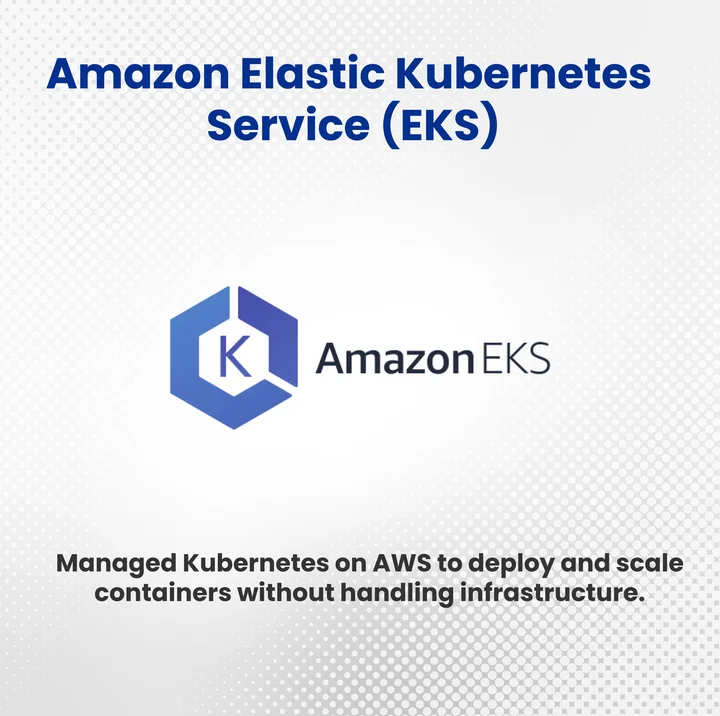
Amazon Elastic Kubernetes Service (EKS) is AWS’s managed Kubernetes platform that helps organizations deploy, run, and scale containerized applications without the burden of maintaining Kubernetes infrastructure on their own.
It gives teams access to the power of Kubernetes while simplifying operations through AWS automation and integrations.
What Are the Core Features of Amazon EKS?
Beyond simplifying Kubernetes, EKS comes with built-in capabilities that make it production-ready at scale:
- Managed Control Plane: AWS provisions and manages the Kubernetes control plane with high availability.
- Cross-Platform Portability: EKS supports standard Kubernetes, enabling workloads to run across on-premises, hybrid, and multi-cloud setups.
- Deep AWS Integration: Works seamlessly with IAM, CloudWatch, VPC, and other AWS services.
- Auto-Scaling Support: Compatible with Kubernetes scaling tools such as the Cluster Autoscaler and HPA.
- Flexible Deployment Options: Choose EC2 instances for control or Fargate for serverless container execution.
What Are the Benefits of Using EKS?
EKS helps teams reduce operational overhead while keeping Kubernetes’s flexibility and scalability intact. Here’s what that means in practice:
- Consistency Across Environments: Standardized Kubernetes APIs reduce vendor lock-in.
- High Reliability: AWS ensures availability with SLAs for mission-critical workloads.
- Enhanced Security: Fine-grained IAM policies secure workloads and service accounts.
- Operational Efficiency: Teams save time on cluster patching, updates, and scaling.
When to Use Kubernetes on AWS EKS?
EKS works best for businesses that need more control, flexibility, or advanced orchestration capabilities. Common scenarios include:
- Multi-cloud or hybrid deployments: When your applications need to run across on-premises, AWS, or other cloud environments.
- Existing Kubernetes workflows: If your teams are already using Kubernetes in development and need a production-ready managed service.
- Advanced workloads: When applications require custom networking, storage, or security configurations beyond simpler orchestrators.
- Large-scale microservices: Ideal for architectures that demand resilience, high availability, and fine-grained scaling.
What is Amazon Elastic Container Service (ECS)?
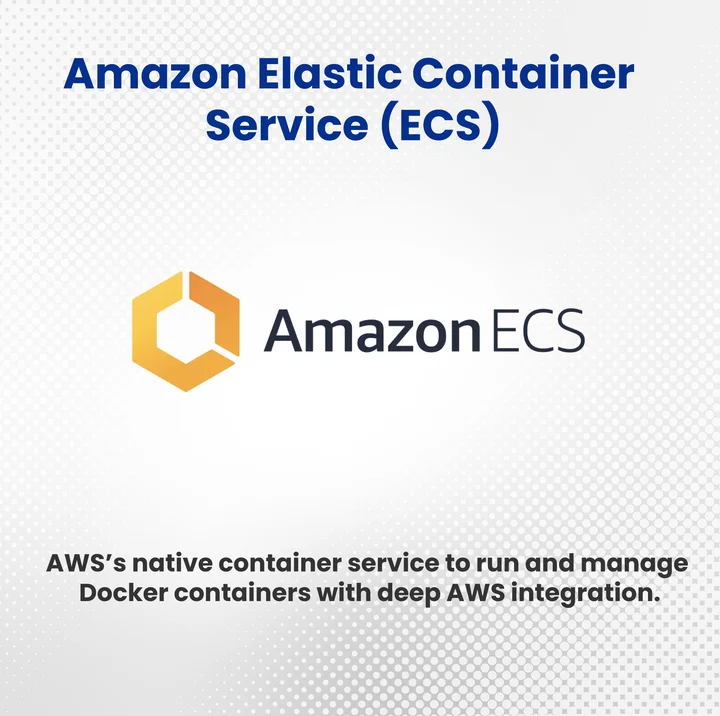
Amazon Elastic Container Service (ECS) is a fully managed container orchestration service provided by AWS. It allows teams to easily run, manage, and scale containerized applications without the need to install and operate their container orchestration platform.
ECS supports Docker containers and integrates tightly with other AWS services, making it a strong option for businesses already using the AWS ecosystem.
What are the Key Features of ECS?
Some standout features of ECS include:
- Deep AWS Integration: Works smoothly with services like IAM, CloudWatch, and VPC.
- Scalability: Supports auto-scaling based on CPU, memory, or custom CloudWatch metrics.
- Flexibility in Compute Options: Choose between EC2 or AWS Fargate for workload execution.
- Security: Uses AWS IAM roles for tasks, ensuring fine-grained access control.
- Cost Optimization: Pay only for the compute resources you use.
These features make ECS attractive for teams that want AWS-native simplicity without the operational overhead of managing Kubernetes.
When Should You Use ECS?
ECS is a good fit for your organization when you:
- Already relies heavily on AWS services.
- Wants a simpler orchestration solution than Kubernetes (EKS).
- Needs to run container workloads without managing servers (via Fargate).
- Prioritizes tight security and compliance with AWS-native tools.
For many startups and enterprises, ECS strikes the right balance between simplicity and scalability, especially when workloads don’t require the advanced flexibility of Kubernetes.
What is Amazon Web Services Fargate (AWS Fargate)?
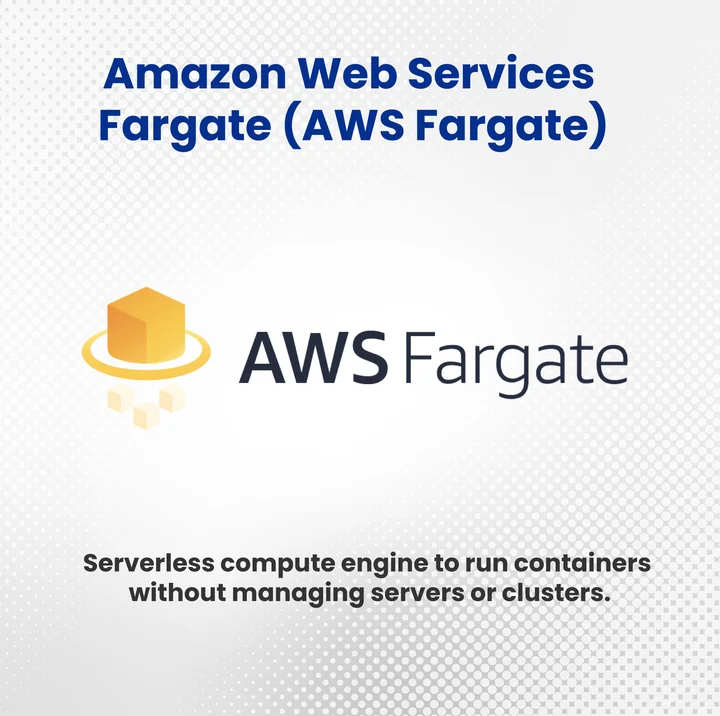
AWS Fargate is a serverless compute engine for containers that eliminates the need to manage servers or clusters. Instead of provisioning and scaling EC2 instances, you only define the CPU, memory, and container image; Fargate takes care of everything else.
This makes it easier to focus on application development rather than infrastructure management.
How Does Fargate Work?
With Fargate, you package your application into a container, define its resource requirements, and then let AWS handle the rest. It automatically provisions the right amount of compute, scales based on demand, and stops resources when they’re no longer needed.
Fargate can be used with:
- Amazon ECS: For simpler orchestration within the AWS ecosystem.
- Amazon EKS: For Kubernetes workloads that still want serverless infrastructure.
This means you get the flexibility of choosing your orchestration tool while avoiding the burden of managing servers.
What Are the Key Features of Fargate?
Fargate brings several advantages to teams running containers:
- No Infrastructure Management: No need to manage or scale EC2 clusters.
- Pay-as-You-Go: Pay only for the exact CPU and memory resources used per task or pod.
- Enhanced Security: Each task or pod runs in isolation with its kernel, improving security boundaries.
- Elastic Scaling: Automatically adjusts resources based on workload demand.
- Integration with ECS and EKS: Works with both AWS-native (ECS) and Kubernetes (EKS) orchestration.
These features make Fargate a powerful option for teams that want to simplify container management without losing flexibility.
When Should You Use Fargate?
Fargate is best suited for organizations that:
- Prefer a serverless approach to container orchestration.
- Don’t want to manage or patch underlying servers and clusters.
- Need predictable scaling for workloads with fluctuating demand.
- We are building microservices, APIs, or batch jobs that require flexibility.
In short, Fargate is ideal when you want to focus entirely on application code and business logic, while AWS takes care of all the infrastructure complexity.
Managing AWS containers can be complex. Let our team simplify your container deployment in minutes.
EKS, ECS, and Fargate each take a different approach to running containers on Amazon Web Services (AWS). The key is understanding how they differ in cost, scalability, security, and management so you can pick the right fit for your applications.
Therefore, which AWS container service truly fits your workloads: ECS, Fargate, or EKS?
Lining them up side by side makes it clear which service matches your cloud container strategy in 2025.
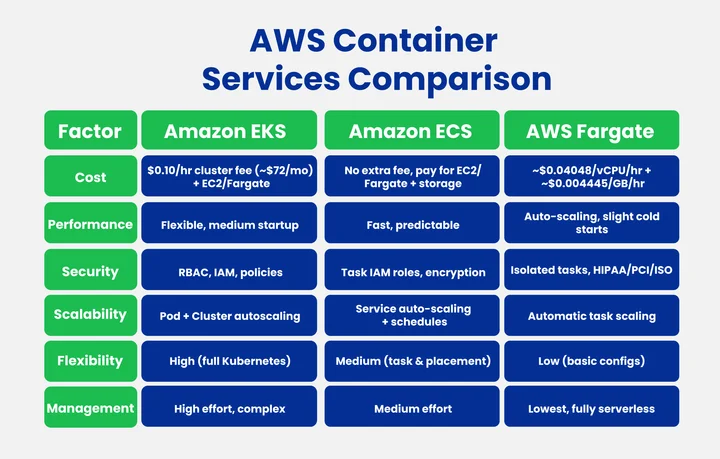
1. Cost Comparison: EKS vs. ECS vs. Fargate in 2025
The cost of running containers on AWS depends on several factors, including the type of compute you choose, storage requirements, networking usage, and whether there are additional control plane fees.
Each of the three services, EKS, ECS, and Fargate, handles pricing differently, which can make one option cheaper or more expensive depending on workload type.
Before diving into specifics, let’s look at how each service handles costs in detail.
Amazon EKS (Elastic Kubernetes Service)
EKS includes a control plane fee of $0.10 per hour per cluster (around $72/month) in addition to compute, storage, and networking costs. For small clusters or development environments, this can feel expensive.
At scale, however, the fixed cost becomes a smaller part of the total, making EKS more cost-effective for large, long-running Kubernetes workloads.
Amazon ECS (Elastic Container Service)
ECS charges no additional service fee. You only pay for the underlying infrastructure (EC2 or Fargate), storage, and data transfer. This often makes ECS the most cost-efficient choice, particularly for steady workloads or teams fully invested in the AWS ecosystem.
AWS Fargate
Fargate pricing is based solely on vCPU and memory usage per task, billed per second. With no servers or clusters to manage, costs scale directly with workload. This is ideal for short-lived or spiky tasks, but for continuous, resource-intensive workloads, Fargate is typically the most expensive option compared to ECS or EKS on EC2.
To make all these differences clearer, here’s a side-by-side cost breakdown of EKS, ECS, and Fargate in 2025.
| Cost Factor | Amazon EKS | Amazon ECS | AWS Fargate |
|---|---|---|---|
| Compute Costs | Based on EC2 instances or Fargate tasks. Costs increase with the number of nodes. | Based on EC2 instances or Fargate tasks. Costs increase with the number of nodes | Per vCPU and memory, billed per second |
| Control Plane / Service Fee | $0.10/hr per cluster | None | None |
| Storage | EBS/S3 usage is billed separately | EBS/S3 usage is billed separately. | EBS/S3 usage billed separately |
| Networking / Data Transfer | Standard AWS networking fees | Standard AWS networking fees | Standard AWS networking fees |
| Scaling Impact | Additional nodes increase EC2/Fargate cost | Additional nodes increase EC2/Fargate cost. | Costs scale directly with added tasks |
| Long-term Cost Efficiency | Efficient at scale | Usually cheapest for steady workloads | Can be expensive for continuous workloads |
Key Takeaways
- EKS: Higher upfront cost due to control plane fees, but scales efficiently.
- ECS: Usually the most cost-effective for steady EC2-based workloads.
- Fargate: Provides serverless flexibility but can be costly for continuous, heavy workloads.
Next, we’ll examine how these services perform under different workloads in Performance Considerations Across EKS, ECS, and Fargate.
2. Performance Considerations Across EKS, ECS, and Fargate
Performance is a critical factor when choosing between Amazon EKS, ECS, and Fargate, as it directly impacts application responsiveness, scalability, and cost efficiency. Amazon EKS provides the flexibility and control of Kubernetes, allowing teams to manage large-scale clusters and fine-tune resource allocation.
However, pod startup times and networking performance can vary depending on cluster configuration. EKS users currently run tens of millions of clusters annually.
ECS offers a simpler AWS-native approach, delivering predictable performance with fast task deployment, efficient horizontal scaling, and low-latency networking. Notably, ECS can scale applications to over 15,000 tasks in a single cluster.
Fargate, as a serverless container solution, abstracts infrastructure management and automatically allocates resources, providing ease of use and scalability for variable workloads. While it may experience slightly longer cold-start times for high-demand tasks, Fargate has been optimized to reduce startup times through techniques like lazy loading of container images.
Understanding these performance characteristics helps teams optimize deployments, maintain consistent application behavior under load, and make informed decisions about resource utilization and cost management.
Quick Overview: Performance Summary Table
| Factor | EKS | ECS | Fargate |
|---|---|---|---|
| Scalability | High, configurable | High, predictable | Moderate to high, automatic |
| Startup/Deployment Time | Medium, Kubernetes overhead | Fast | Fast, slight cold-start delay |
| Networking & Latency | Fine-grained, potential latency variations | Low latency, simple networking | Secure isolation, minor latency |
| Performance Under Load | High, with proper tuning | Consistent, reliable | Moderate-high, minor variability |
Key Takeaway
- EKS: Ideal for teams requiring Kubernetes flexibility and full control over performance.
- ECS: Offers reliable, predictable performance with minimal management overhead.
- Fargate: Provides simplicity and serverless scaling, perfect for variable workloads or smaller teams.
With performance considerations clearly outlined, it is equally important to examine the security and compliance practices that ensure your workloads remain protected and meet regulatory requirements.
Continue reading to know about the security and compliance practices!
3. Security and Compliance Practices for EKS, ECS, and Fargate
Ensuring robust security and meeting compliance requirements is critical when running containerized workloads in the cloud. AWS provides multiple layers of security controls and monitoring capabilities across EKS, ECS, and Fargate, helping organizations protect their infrastructure, data, and applications.
From identity and access management to encryption and auditing, each service offers tools and practices tailored to different operational needs.
Before diving into cost and operational aspects, it’s important to understand how each service addresses security and compliance.
Amazon EKS
Amazon EKS provides a Kubernetes-managed environment, which means organizations still have control over cluster-level configurations and policies. Security in EKS is enforced through Kubernetes-native mechanisms like role-based access control (RBAC) and network policies, while AWS IAM integration ensures that users and applications only have the permissions they need.
Additionally, sensitive data such as secrets can be encrypted, and logs can be monitored through CloudWatch or CloudTrail, helping teams meet strict compliance requirements for industries like healthcare and finance.
Amazon ECS
ECS simplifies container orchestration while maintaining security at the task level. Each ECS task can have an IAM role, which defines precise permissions for that workload, reducing the risk of privilege escalation. ECS also integrates with AWS Security Hub and CloudTrail, providing centralized monitoring, auditing, and alerting capabilities.
Encryption is supported both in transit and at rest, ensuring that sensitive information remains protected even as applications scale across multiple instances.
AWS Fargate
Fargate takes a serverless approach to container deployment, abstracting away the underlying infrastructure. This significantly reduces the attack surface, as developers don’t have to manage EC2 instances or cluster nodes directly.
Each Fargate task runs in its own isolated environment, preventing cross-task access and minimizing potential vulnerabilities.
Furthermore, Fargate maintains built-in compliance certifications, including HIPAA, PCI DSS, and ISO standards, allowing organizations to focus on building applications without worrying about infrastructure-level compliance.
The key security features of each service can be seen more clearly in the following comparison.
| Service | Key Security Features | Isolation & Access Control | Encryption |
|---|---|---|---|
| EKS | RBAC, network policies, secret encryption | Pod-level isolation, IAM integration | At rest & in transit |
| ECS | Task IAM roles, CloudTrail monitoring | Task-level access control | At rest & in transit |
| Fargate | Serverless abstraction, automatic task isolation | Task-level isolation | At rest & in transit |
This keeps the table compact while still conveying the most important security and compliance aspects. Before we explore operational details, it’s important to understand how each service adapts as your workloads grow.
4. Scalability: How Do EKS, ECS, and Fargate Handle Growth?
Scalability ensures that applications can handle increasing traffic, user demand, and data volume without impacting performance. In cloud-native environments, the ability to scale efficiently is critical for business continuity and cost management.
AWS offers multiple mechanisms across EKS, ECS, and Fargate to support both vertical and horizontal scaling, allowing teams to meet demand dynamically while optimizing resource usage.
Let’s examine Scalability in Each Service, how each service approaches scaling, and the practical implications for growth:
Amazon EKS
EKS provides developers with control over scaling Kubernetes clusters to handle changing workloads efficiently. By leveraging Kubernetes-native tools, it ensures applications remain responsive even during traffic spikes or heavy computational demand.
With automatic pod scaling combined with dynamic adjustment of worker nodes, EKS balances performance and resource optimization without requiring constant manual management.
Here are the key features that make EKS scaling effective:
- Horizontal Pod Autoscaler (HPA): Automatically scales pods based on CPU, memory, or custom metrics.
- Cluster Autoscaler: Adjusts the number of worker nodes dynamically in response to demand.
- Flexible scaling: Supports complex workloads and varying traffic patterns.
Amazon ECS
ECS offers built-in support for service auto-scaling, enabling tasks to scale in or out automatically based on predefined metrics such as CPU utilization, memory usage, or custom CloudWatch metrics.
This ensures that containerized applications maintain consistent performance while reducing the need for manual intervention. ECS also allows scheduled scaling to prepare for predictable traffic spikes.
AWS Fargate
Fargate abstracts the underlying infrastructure, automatically handling scaling at the task level. Developers don’t need to manage EC2 instances or cluster nodes; Fargate provisions the right compute resources in response to demand.
This serverless approach simplifies operations and ensures that applications can scale seamlessly, whether workloads are constant or highly variable.
Quick Summary Table
| Service | Scaling Approach | Auto-Scaling Options | Management Effort |
|---|---|---|---|
| EKS | Horizontal Pod Autoscaler + Cluster Autoscaler | CPU, memory, custom metrics | Medium (requires Kubernetes knowledge) |
| ECS | Service auto-scaling | CPU, memory, CloudWatch metrics, scheduled scaling | Low to Medium |
| Fargate | Task-level automatic scaling | Transparent, built-in | Low (fully managed) |
Key Takeaway: EKS provides maximum flexibility and control for complex workloads, ECS balances automation with customization, and Fargate delivers hands-off scalability for teams seeking simplicity and efficiency.
5. Flexibility and Customization Options
Flexibility and customization allow teams to adapt container environments to their specific application needs. AWS services offer different levels of control over infrastructure, configurations, and deployment patterns.
This is significant for organizations that need to optimize performance, integrate with other services, or meet specific compliance and operational requirements. Teams can choose the best solution by weighing control, complexity, and usability by knowing how flexible each service is.
Let’s examine how EKS, ECS, and Fargate provide flexibility and customization:
Amazon EKS
EKS offers maximum flexibility by providing full Kubernetes control. Developers can define custom pod configurations, use advanced networking setups, and integrate with a wide range of tools and plugins. This makes it ideal for complex workloads requiring precise control over orchestration and cluster behavior.
- Full Kubernetes control: Customize pods, deployments, and services freely.
- Advanced networking options: Supports VPC, security groups, and custom CNI plugins.
- Extensive integrations: Works with monitoring, logging, and CI/CD tools.
Amazon ECS
ECS balances flexibility with simplicity. It allows task-level configurations and supports custom task definitions, container placement strategies, and networking modes. Teams can adjust ECS clusters to match their operational needs without dealing with the complexity of Kubernetes.
- Task-level customization: Define CPU, memory, and environment variables per task.
- Placement strategies: Control how tasks are distributed across clusters.
- Networking modes: Supports bridge, host, and AWSVPC networking.
AWS Fargate
Fargate prioritizes simplicity and ease of use while still offering enough customization to suit most workloads. Developers can configure CPU and memory for tasks, specify environment variables, and control logging and networking options, all without managing underlying infrastructure.
- Serverless flexibility: Configure tasks without managing servers or clusters.
- Resource configuration: Set CPU and memory per task.
- Custom environment: Define networking, logging, and environment variables.
Here’s a quick comparison of how EKS, ECS, and Fargate differ in control and customization:
| Service | Control Level | Customization Highlights | Best Fit |
|---|---|---|---|
| EKS | High | Pods, advanced networking, integrations | Complex workloads |
| ECS | Medium | Task defs, placement, networking modes | Balanced needs |
| Fargate | Low | CPU/mem configs, env vars, logging | Simple deployments |
Key Takeaways
- EKS→ maximum control for complex setups.
- ECS → balance of flexibility and simplicity.
- Fargate → minimal effort for quick deployments.
Ease of management and deployment plays a key role when evaluating container orchestration options. It determines how quickly applications can be launched, updated, and scaled, as well as the operational effort required.
Beyond setup, monitoring and logging also matter. EKS and ECS handle visibility differently, so the management effort depends on how much teams want to invest in observability and debugging.
Here’s how EKS, ECS, and Fargate compare in terms of management and deployment:
Amazon EKS
EKS requires more hands-on management, as teams are responsible for configuring and maintaining Kubernetes clusters, worker nodes, and networking. While this gives maximum control and flexibility, it also adds operational complexity and requires Kubernetes expertise.
- Cluster management required: Provision and maintain worker nodes.
- Kubernetes expertise needed: Manage pods, deployments, and scaling policies.
- Full control: Maximum customization and integration options.
Amazon ECS
ECS reduces management overhead compared to EKS. It automates cluster operations, task scheduling, and service discovery, making deployments faster and simpler. Teams still have flexibility for task-level configurations and placement strategies, but without the full complexity of Kubernetes.
- Simplified cluster management: ECS handles scheduling and service management.
- Task-level control: Customize CPU, memory, and environment variables per task.
- Easier deployments: Faster setup and updates compared to EKS.
Fargate
Fargate provides the highest ease of management, abstracting all underlying infrastructure. As part of AWS compute services for containers, it lets developers focus solely on defining tasks, while AWS automatically handles provisioning, scaling, and patching.
This serverless approach minimizes operational work and speeds up deployment, making it ideal for teams prioritizing simplicity.
- Serverless management: No EC2 or cluster maintenance required.
- Automatic scaling and patching: Infrastructure handled by AWS.
- Quick deployments: Focus entirely on application tasks and configuration.
Here’s A Quick Overview:
| Service | Management Effort | Deployment Speed | Best Fit |
|---|---|---|---|
| EKS | High-cluster & node management | Slower – requires expertise | Teams needing full control |
| ECS | Medium – simplified cluster ops | Faster than EKS | Balanced simplicity & control |
| Fargate | Low—no infra to manage | Fastest – fully automated | Teams prioritizing simplicity |
Key Takeaways
- EKS → full control, but heavy management.
- ECS → reduces complexity with faster deployments.
- Fargate → zero management, fastest to launch.
Overwhelmed By Managing AWS Complexities? Let our experts smooth your cloud operations with ease.
Which Service is Best for Microservices and Large-Scale Applications?
You need a container service that keeps your microservices efficient while ensuring large-scale applications can grow without operational bottlenecks. These workloads demand platforms that adapt quickly to changing traffic, maintain consistent performance, and support frequent updates without adding complexity.
Microservices often require rapid deployment cycles, isolated workloads, and flexible scaling. Fargate delivers a serverless approach, perfect for lightweight services or APIs with fluctuating traffic, while ECS provides AWS-native orchestration for mid-sized applications, giving teams more control without heavy infrastructure management.
Meanwhile, the Large-scale applications call for full control, high reliability, and the ability to manage complex workloads. Amazon EKS allows teams to harness the full power of Kubernetes, orchestrate hundreds of microservices, enforce advanced networking policies, and maintain portability across environments.
Organizations can choose the AWS container service that best supports performance, scalability, and efficiency by taking into account operational priorities, team expertise, and workload complexity.
The table below summarizes which service best fits different scenarios:
| Service | Best Suited For | Key Strength | Considerations |
|---|---|---|---|
| EKS | Large, complex microservices | Full Kubernetes control, multi-cloud flexibility | Requires Kubernetes expertise |
| ECS | Mid-sized apps, AWS-focused workloads | Tight AWS integration, easier setup | Less portable than Kubernetes |
| Fargate | Smaller or lightweight services | Can be costly at a large scale | Can be costly at a large scale |
Now that we’ve seen which AWS service fits different workloads, the next step is to explore how these solutions play out in real-world business types.
How Do AWS Container Solutions Support Businesses of All Sizes?
You need your applications to run efficiently while maintaining scalable and reliable operations. AWS container solutions help organizations achieve these goals by simplifying application deployment and management.
Containers allow companies to standardize environments, streamline updates, and reduce operational overhead, making it easier to adapt to changing market demands. Organizations worldwide are increasingly adopting containerization to enhance application scalability, streamline development processes, and reduce operational complexities.
A 2025 report shows that over 87% of respondents reported using container technologies, a significant rise from just 55% in 2017.
AWS provides a robust suite of container services, including Amazon ECS, EKS, and AWS Fargate, enabling businesses to deploy and manage applications efficiently. These services offer scalability, security, and seamless integration with other AWS offerings, making them a preferred choice for enterprises aiming to modernize their infrastructure.
With a clear understanding of AWS container adoption and its benefits, let’s explore how different types of companies implement these services to meet their unique business needs.
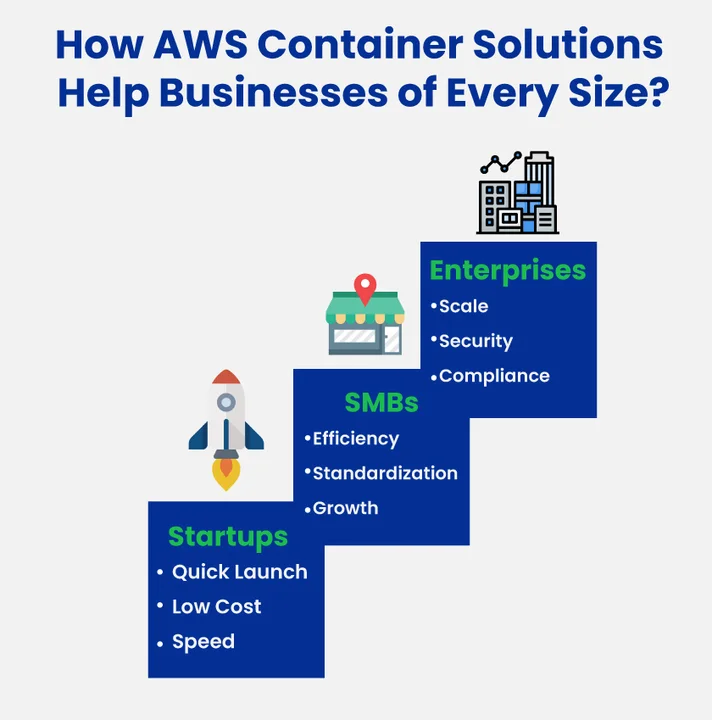
1. Startups/Early-Stage Companies
For startups, speed and flexibility are everything. With limited budgets and small teams, early-stage businesses require technology that enables them to experiment, launch quickly, and scale efficiently without incurring heavy upfront investment.
AWS container solutions make this possible by offering a lightweight, cost-efficient way to deploy and manage applications. Startups can focus more on innovation and customer growth rather than struggling with infrastructure complexities.
Why Do Containers Matter For Startups?
At this stage, the focus is on moving fast without adding unnecessary complexity. Containers give startups the ability to launch quickly, manage applications with minimal effort, and adjust direction as the business evolves.
- Quick deployment cycles to test and launch products faster
- Low operational overhead with minimal infrastructure management
- Pay-as-you-go pricing that keeps costs predictable
- Flexibility to pivot or adapt quickly to market demands
Together, these advantages give startups the freedom to grow at their own pace while ensuring their technology foundation stays agile and cost-effective.
2. SMBs / Medium-Sized Businesses
Moving beyond the startup stage, medium-sized businesses often face growing complexity as teams expand and workloads multiply. At this point, companies need solutions that help them scale efficiently while keeping operations reliable. AWS container solutions make it easier to manage applications consistently, reduce manual effort, and maintain performance across different departments.
Why Do Containers Matter for SMBs?
At this stage, the challenge is balancing steady growth with operational efficiency. Containers provide SMBs with a structured way to manage applications, streamline updates, and ensure resources are used effectively without adding extra overhead.
- Standardized environments for smoother workflows
- Simplified updates and maintenance across teams
- Improved resource efficiency without extra complexity
- Reliable performance that supports steady business growth
With these benefits, SMBs can scale with confidence without sacrificing stability or performance.
3. Large Enterprises
At the enterprise level, organizations often manage complex IT ecosystems with multiple applications, global teams, and diverse workloads. Scaling operations while maintaining security, compliance, and performance is a constant challenge.
AWS container solutions provide enterprises with the control and flexibility needed to manage these complexities, ensuring smooth operations across different business units and geographies.
Why Do Containers Matter for Enterprises?
For large organizations, containers bring structure and efficiency to environments that might otherwise be difficult to manage. They make it easier to maintain consistency across teams while supporting innovation at scale.
- Consistent deployments across global teams and locations
- Enhanced security and compliance for critical applications
- Centralized management of diverse workloads
- Scalability to handle large, complex operations with ease
These capabilities help enterprises streamline operations while accelerating innovation across the business.
Keep reading to see how containers are transforming industries like FinTech and healthcare, and what that means for your business.
Industry-Specific Use Cases for AWS Container Solutions
You can see containers moving beyond startups, becoming essential for industries that need secure, scalable, and reliable systems. Financial services depend on them for fast and secure transactions, healthcare organizations use them to handle sensitive patient data, and retail businesses rely on them to scale during busy seasons.
Each industry comes with its own challenges, including compliance, scalability, and real-time performance, and AWS solutions for industries provide the flexibility and reliability needed to address them.
That is why sectors such as FinTech, Healthcare, Retail, EdTech, and Logistics are adopting containers to modernize operations and deliver consistent customer experiences.
With the basics covered, it’s time to see how containers make an impact across real-world industries.

1. FinTech
In FinTech, Organizations must balance speed, security, and regulatory compliance. Companies process thousands of transactions per second, from online payments to interbank transfers. Even short downtime can damage customer trust, cause financial losses, and risk non-compliance with standards like PCI DSS.
For Example, a digital banking platform handling payroll, peer-to-peer transfers, and investment transactions can automatically scale during month-end spikes or high-volume trading periods. This ensures fast transaction processing, uninterrupted services, and full compliance with regulatory requirements while enabling teams to deploy updates quickly without downtime.
How AWS solutions for industries benefit FinTech:
- Isolated workloads: Each service runs securely in its own container, reducing risk.
- Real-time monitoring: Teams can track performance and detect issues instantly.
- Automated scaling: Services adjust automatically to handle transaction spikes.
- Faster deployment cycles: Updates can be rolled out without downtime.
- Resource optimization: Hundreds of microservices can run efficiently without adding infrastructure costs.
Overall, these solutions empower FinTech organizations to deliver secure, reliable, and highly available systems while minimizing operational risks and supporting innovation.
2. HealthTech
In HealthTech, reliability, security, and regulatory compliance are top priorities. Organizations building digital health platforms, telemedicine apps, and research tools must manage sensitive patient data while keeping applications available 24/7, as even brief downtime or performance issues can disrupt patient care, slow innovation, and risk non-compliance.
For Instance, a telemedicine platform can handle sudden spikes in virtual consultations during flu season or a public health campaign. Similarly, a network of hospitals running electronic medical records (EMRs) can deploy updates across all facilities simultaneously without affecting patient care, ensuring secure and responsive services.
How AWS solutions for industries benefit HealthTech:
- Secure data isolation: Patient records and applications run safely in separate containers.
- High availability: Systems remain operational even during peak usage or maintenance.
- Automated scaling: Platforms adjust automatically to handle sudden traffic increases.
- Faster deployment: Updates and new features can be rolled out with minimal disruption.
Overall, containers and AWS solutions empower HealthTech organizations to deliver secure, reliable, and compliant digital health services, ensuring uninterrupted patient care and operational efficiency.
3. Retail
In Retail, businesses must manage fast-changing customer demands, seasonal spikes, and omnichannel operations while maintaining smooth digital experiences. Downtime, slow transaction processing, or inventory mismatches can directly impact revenue and customer satisfaction.
For Example, an e-commerce platform can handle Black Friday traffic surges or holiday shopping spikes without slowing down checkout processes. Similarly, a retail chain can update inventory and pricing systems across hundreds of stores simultaneously, ensuring accurate stock levels and pricing in real time.
How AWS solutions for industries benefit Retail:
- Automatic scaling: Handles sudden spikes in online traffic during promotions or peak seasons.
- Faster deployments: Roll out updates to websites, apps, and backend systems with minimal disruption.
- Consistent performance: Maintains smooth customer experiences across web and mobile channels.
- Enhanced security: Protects customer data and payment information through isolated workloads.
Overall, containers and AWS solutions empower retailers to deliver reliable, scalable, and secure services, improving customer experience while optimizing operational efficiency.
4. Logistics & Transportation
In logistics and transportation, efficiency and visibility are critical. Companies must process real-time tracking data, optimize delivery routes, and coordinate with global supply chains, where even small delays can disrupt operations and increase costs.
For Example, a delivery company can instantly scale applications during peak shipping periods, while a freight operator can integrate containerized apps across multiple regions to maintain smooth global operations.
How AWS solutions for industries benefit Logistics & Transportation:
- Real-time data processing: Track shipments, vehicles, and inventory without delays.
- Route optimization: Use containerized microservices to update delivery routes instantly.
- Scalable infrastructure: Handle seasonal shipping surges or regional demand shifts.
- Integration with global systems: Connect seamlessly with partners, suppliers, and customs systems.
In short, AWS container solutions give logistics providers the agility and resilience to deliver on time, cut costs, and adapt quickly to changing market and customer demands.
5. EdTech
In education technology, accessibility, reliability, and scalability are essential. Institutions need platforms that can support virtual classrooms, learning management systems, and research tools without disruptions. Downtime or slow performance directly affects student engagement and learning outcomes.
For Example, a university can roll out updates to its learning management system without interrupting classes, while an online education platform can scale during peak enrollment periods or live exam sessions.
How AWS solutions for industries benefit EdTech:
- Scalable learning environments: Handle thousands of concurrent students during online classes or exams.
- Faster updates: Deploy new course modules or system enhancements without downtime.
- Consistent reliability: Ensure smooth access to learning platforms across devices and geographies.
- Strong security: Protect sensitive student and institutional data with built-in AWS compliance features.
Overall, AWS container solutions enable educational institutions to deliver high-quality, uninterrupted digital learning experiences while keeping operations cost-efficient and secure.
Want To Modernize Your Industry With AWS Containers? Our AWS solutions empower businesses to innovate faster while staying cost-efficient.
How Does Clustox Help Businesses Select Between EKS, ECS, and Fargate?
You may be wondering which AWS container service fits your needs best: EKS, ECS, or Fargate. Each option comes with its own strengths, but the real challenge is knowing which one aligns with your workloads, compliance requirements, and long-term growth plans.
This is where Clustox steps in!
We dig into the reality of how your business runs. We match container choices with the real challenges your industry faces, whether you’re a retail platform getting ready for seasonal spikes, a healthcare provider handling sensitive patient data, or a fintech company needing PCI DSS compliance.
We bring a mix of technical expertise and business insight. That means breaking down costs in real numbers, planning scalability that matches your growth, and choosing a security model that keeps auditors happy without slowing down innovation.
Instead of trial-and-error, you get a clear roadmap for whether EKS, ECS, or Fargate is the right fit and the confidence that your container strategy is built for long-term success.
To make this process easier, Clustox reviews these factors with you and helps align the decision with both technical needs and business priorities.
1. Cost Implications
Budget plays a key role when selecting a container service. Some businesses may want predictable pricing, while others prioritize flexibility in scaling resources up or down. Clustox helps estimate costs across EKS, ECS, and Fargate so teams can choose an option that balances affordability with performance.
2. Scalability Needs
Not every workload grows at the same pace. While EKS offers advanced scaling for complex deployments, ECS and Fargate provide more straightforward options for handling spikes in traffic. Clustox analyzes your growth patterns and designs a solution that keeps applications responsive as demand increases.
3. Security and Compliance
Industries like FinTech and Healthcare often have strict compliance requirements. Each service comes with different security models, ranging from granular controls in EKS to managed policies in ECS and Fargate. Clustox evaluates your compliance obligations and ensures the chosen service aligns with those standards.
4. Team Expertise
The capabilities of your in-house team influence which service makes sense. Kubernetes may be powerful, but it requires specialized skills, whereas ECS and Fargate reduce management overhead. Clustox assesses team readiness and guides on selecting a service that matches available expertise.
5. Application Workloads
Different applications have different runtime demands. For example, containerized microservices may thrive in EKS, while lightweight or event-driven tasks might work better on Fargate. Clustox studies workload characteristics to recommend a setup that delivers efficiency without overcomplication.
Frequently Asked Questions (FAQs)
2. When should I use EKS vs. ECS vs. Fargate?
Deciding which service to use depends on your workload and management preferences.
- EKS: For full Kubernetes control and complex workloads.
- ECS: For simpler AWS-native deployments with less overhead.
- Fargate: For serverless, hands-off scaling and lightweight workloads.
3. Are these services secure for regulated industries like FinTech or Healthcare?
Yes, AWS implements multiple layers of security and compliance:
- EKS: Kubernetes RBAC, network policies, IAM integration, secret encryption.
- ECS: Task-level IAM roles, CloudTrail monitoring, and encrypted data in transit and at rest.
- Fargate: Task isolation, minimal attack surface, and automatic scaling with HIPAA, PCI DSS, and ISO certifications.
These security features ensure that regulated industries can deploy containers safely while meeting strict compliance standards.
4. Which AWS container service is best for microservices?
The best service for microservices depends on the size, complexity, and scaling needs of your workloads.
- Fargate: Handles small, independent services with automatic scaling and zero server management.
- ECS: Good for mid-sized microservices within AWS, balancing control and simplicity.
- EKS: Suited for large, complex microservices architectures requiring Kubernetes flexibility, advanced networking, and fine-grained scaling.
5. Can I switch between these services if my needs change?
Yes, Workloads can migrate between EKS, ECS, and Fargate, but planning is essential. Differences in orchestration models, scaling methods, and integrations require a careful migration strategy. Clustox helps businesses evaluate workloads and plan seamless transitions to minimize downtime and operational risk.
6. What is the best AWS service for containerized workloads in 2025?
The “best” AWS container service depends on your workload needs:
- Amazon EKS is best for teams needing full Kubernetes control, complex deployments, and flexibility at scale.
- Amazon ECS is best for organizations that want a simple, AWS-native solution with predictable performance and lower costs.
- AWS Fargate is best for teams that prefer serverless operations, quick deployments, and minimal infrastructure management.
In 2025, most enterprises combine these services by using EKS for Kubernetes-based apps, ECS for steady AWS-native workloads, and Fargate for on-demand or spiky tasks.
The Bottom Line
When it comes to running containerized applications on AWS, the decision between EKS, ECS, or Fargate can feel overwhelming. Each service offers different ways to manage and scale workloads, giving teams the flexibility to choose the approach that best fits their needs and goals.
Across industries like FinTech, Healthcare, Retail, Logistics, and EdTech, containers are essential for achieving secure, scalable, and highly available operations. They simplify deployments, reduce operational overhead, and allow teams to focus on innovation rather than managing infrastructure.
But navigating cost, performance, security, and compliance considerations requires careful planning.
To make this process easier, Clustox helps businesses turn complexity into clarity. By assessing your workloads, team expertise, and business priorities, Clustox recommends the best AWS container service for your unique needs.
Clustox provides a clear roadmap so you can make confident decisions, from estimating costs and planning scalability to ensuring compliance and optimizing performance.
This method guarantees that your container strategy is in line with technical specifications and business objectives, regardless of whether you go with EKS, ECS, or Fargate. This lets your team innovate more quickly without having to worry about infrastructure.
Trying to decide between Fargate, ECS, or EKS for your applications? Clustox makes it simple!

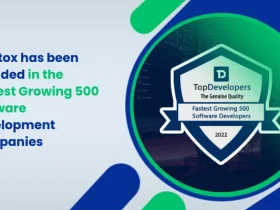
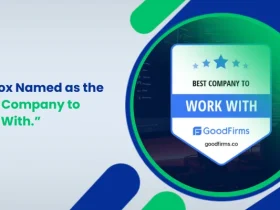

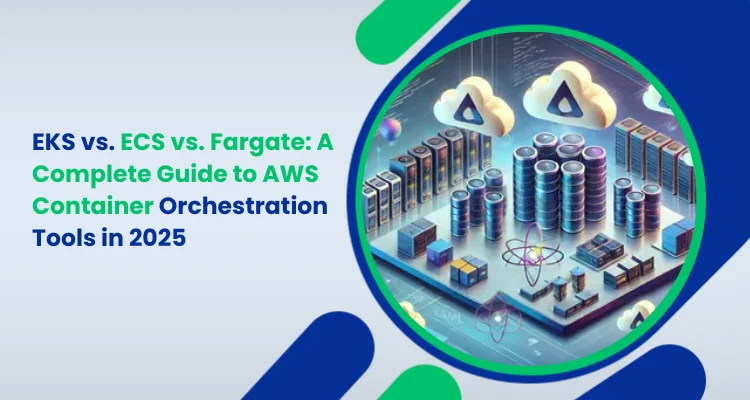



Share your thoughts about this blog!